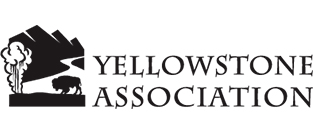The allocation of costs, the voting terms, the role of each person within the « co-ownership »…
All these notions seem obscure to you?
Let us guide you and thereby become a knowledgeable « co-owner ». You ‘ve just acquired your dream apartment. Therefore, you just become «co-owner» and, as such, a decision-making member of your building. From now on, if you want to take actions, a good knowledge of all the machinery is required.
Key players:
The « co-ownership trustee » is mandatory in every « co-ownership ».
It can either be a paid professional, or a non-professional volunteer. In every instance, it is a person responsible for the preservation of the building, as well as managing «co-ownership » staff, keeping the « co-ownership » financial accounts in order, and maintaining the archives. The co-ownership trustee’s mandate is generally of 3 months renewable. He guarantees the execution of the « co-ownership » decisions.
He is appointed by an absolute majority (see chart). The « association of co-owners » is the organ which owns the communal areas. It forms the decision-making legal entity of the « co-ownership ». The «co-ownership board » is formed by «co-owners» designated by the « association of co-owners».
It provides the link between the « association of co-owners » and the « co-ownership trustee ». It assists the latter and controls its management.
The «general assembly » gathers all the «co-owners», each one of them as the right to participate in it. It shall meet at least once per year to decide on all the matters related to the organization, functioning and management of the « co-ownership ».
Documents made available:
The « declaration of condominium » is the most important document. It especially sets the repartition between communal areas and private areas. It also determines the conditions of use that apply to these areas. Its modification can only be effective through a « double majority vote» (see chart).
The « descriptive schedule of division» is most often attached to the « declaration of condominium ». It includes the list of every «private property lot» – each lot is registered at the «Land Registry» under a number – its detailed description, as well as its intended use. This document also specifies the «percentage number» corresponding to each lot, which determines directly the voting rights to the «general assemblies» (see chart on the next page). It indicates what is your «proportionate share» of the property in communal areas and in the various charges: maintenance, elevator, green spaces, caretaker…
The building «maintenance book».
It is kept up to date by the « co-ownership trustee », it indicates the significant construction works done or voted as well as all the current contracts in which the «co-ownership » is committed to: maintenance, insurance…
General assemblies’ Official reports» report every decision voted during the «co-owners’ meeting».
They enable anyone to know which works are going to start in the near future, as well as those considered or postponed for various reasons (budget, additional cost estimate, etc.)
Understanding the amount of charges
The law distinguishes between general «co-ownership charges», which are linked with the preservation, the maintenance and the management of communal areas and the charges generated by the collective facilities (elevator, community heating, etc.). To each lot corresponds its «proportionate share» of communal areas, expressed in thousandths or in «percentage number», determining an allocation of charges. The «percentage number», also determines the number of votes possessed by every «co-owner» at the «general assemblies».
If your «co-ownership » includes 200 thousandths and your «proportionate share» is 10 thousandths, you must use the following formula (proportionate share/ total amount of vote) X 100.
Thus, you will get your votes percentage.
In the present example, the calculation is (10/200) X100, what leads to the result of 5% of the «co-ownership » votes.
|
Works voting |
|||
|
Calculation method |
Decisions and works concerned |
Example : co-ownership of five co-owners with 100 votes each et ten others with 50 votes each, let a total of 300 votes |
|
|
Simple majority (Article 24) |
Majority of votes of the present co-owners during the general assembly. Abstainers non taken into account. |
Maintenance works and daily management of communal areas, replacement of deficient facilities, building insurance, works to make the building more accessible to disabled people, approval of the accounts… |
People present: 5 persons owning 100 votes each and 2 persons owning 50 votes. Simple majority obtained with 300 votes. |
|
Absolute majority (Article 25) |
Majority of votes of all the present co-owners, represented or absent during the the general assembly. |
Mandatory works (building side restoration for example). Thermal control and energy saving works… Works realized at some co-owners’ expenses on communal areas. |
Absolute majority is obtained with 501 votes. If the majority doesn’t reach the number of votes, a second vote can be organized with the same majority standard. |
|
Double majority (Article 26) |
Majority of votes of co-owners representing at least two third of the votes of all the co-owners, present, represented or absent. |
Enhancing, transforming or additional works (installation of an interphone, layout or creation of new communal premises…) |
Double majority is obtained with 666 votes and 8 co-owners voting. In this example 700 votes and 9 co-owners are necessary. |
|
Unanimity |
Unanimity of all the co-owners. |
Increasing height works or construction works leading to the creation of new private lots or changing the building use… |
Unanimity is equivalent to the 15 co-owners’ votes. |
|
Absence of any vote |
Urgent and imperative works in order to protect the co-ownership : wall lowering, roof leaking… |
The general assembly isn’t consulted by the co-ownership trustee, only the association of co-owners is. |
|
fichier à telecharger:
 180313 Living in « co-ownership », user instructions
180313 Living in « co-ownership », user instructions





